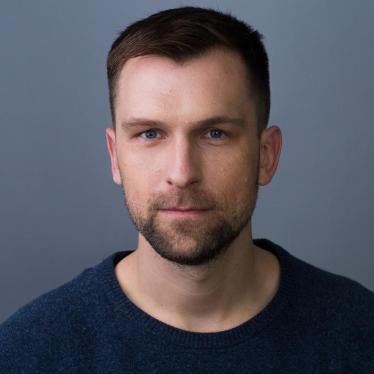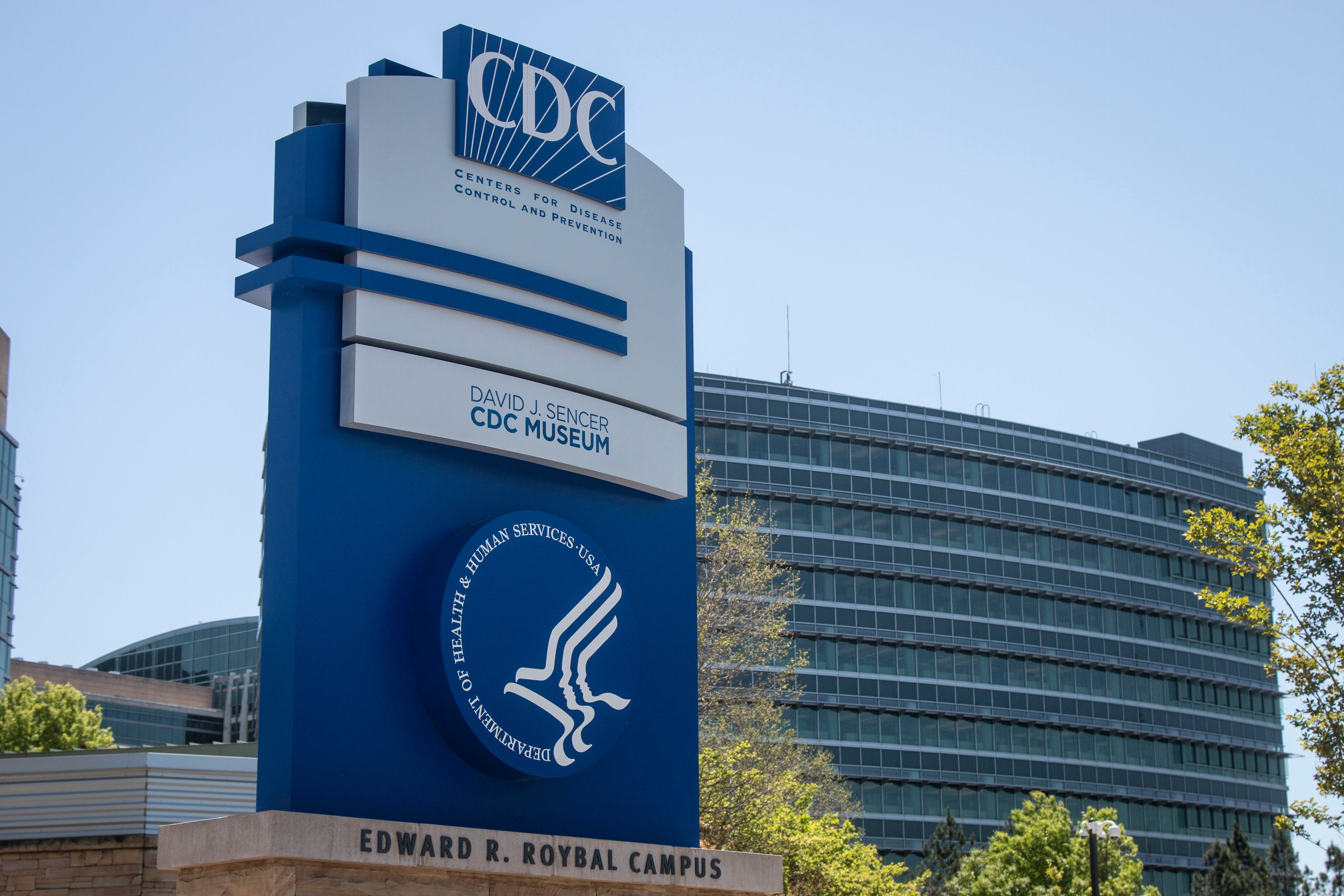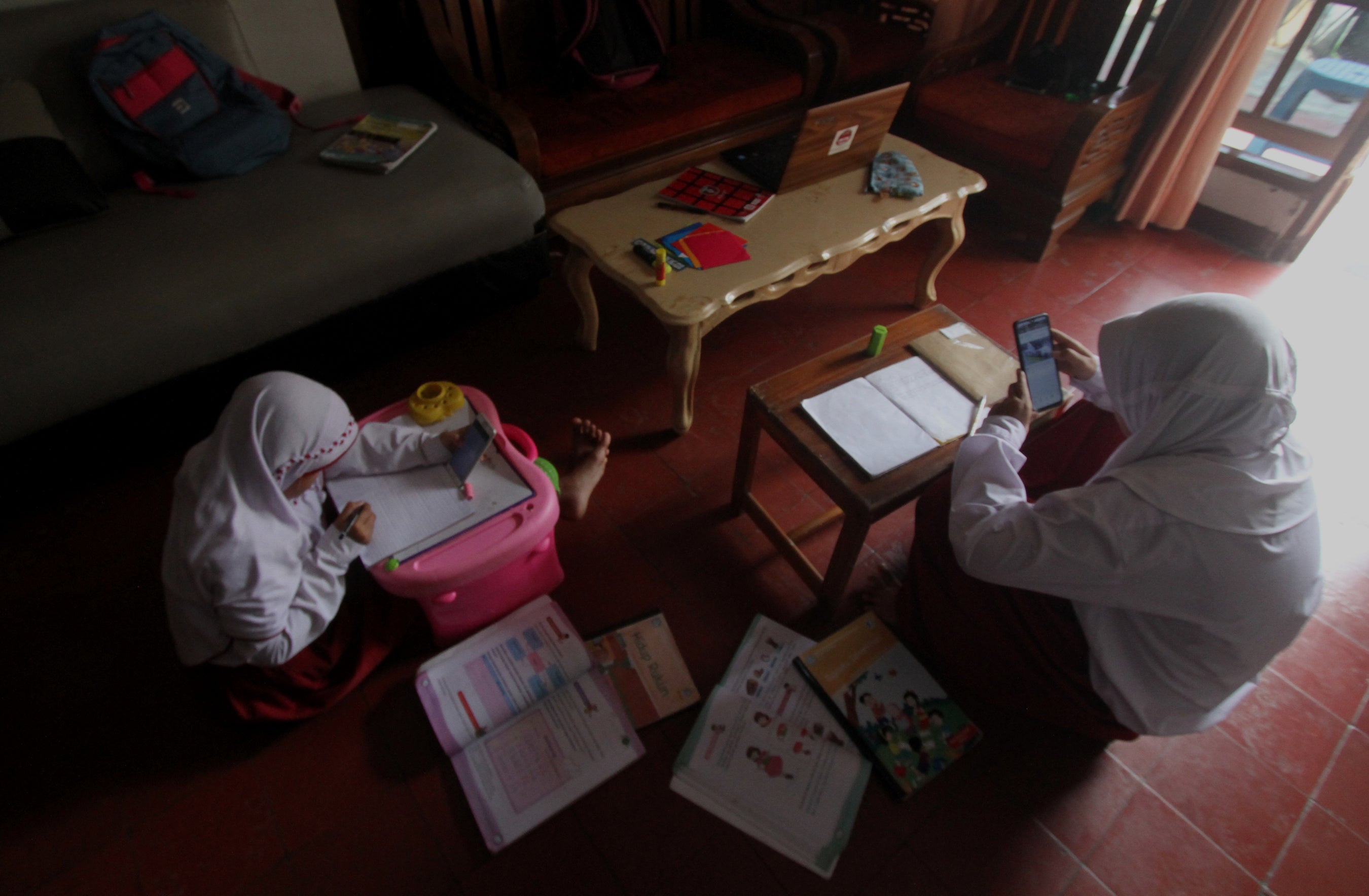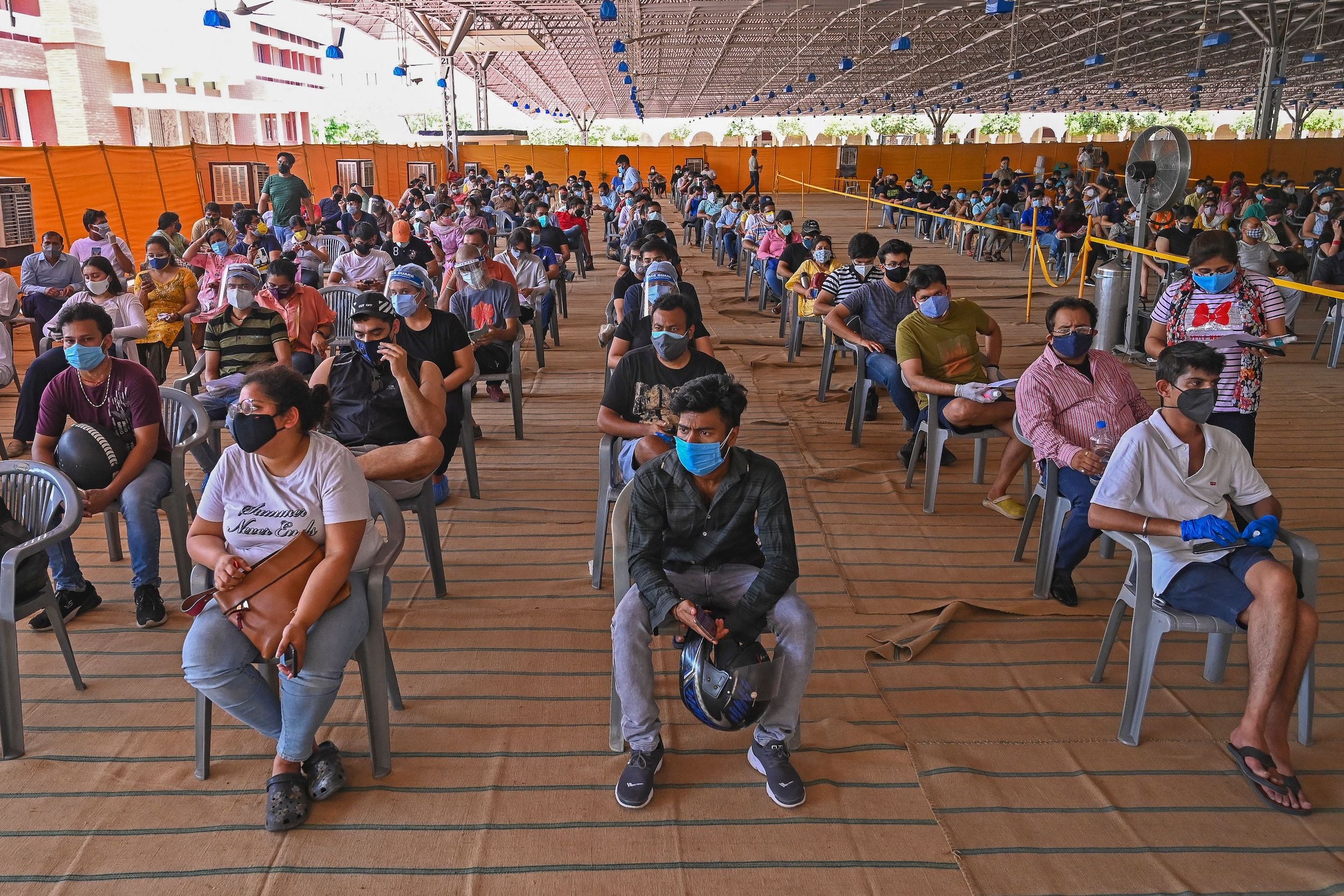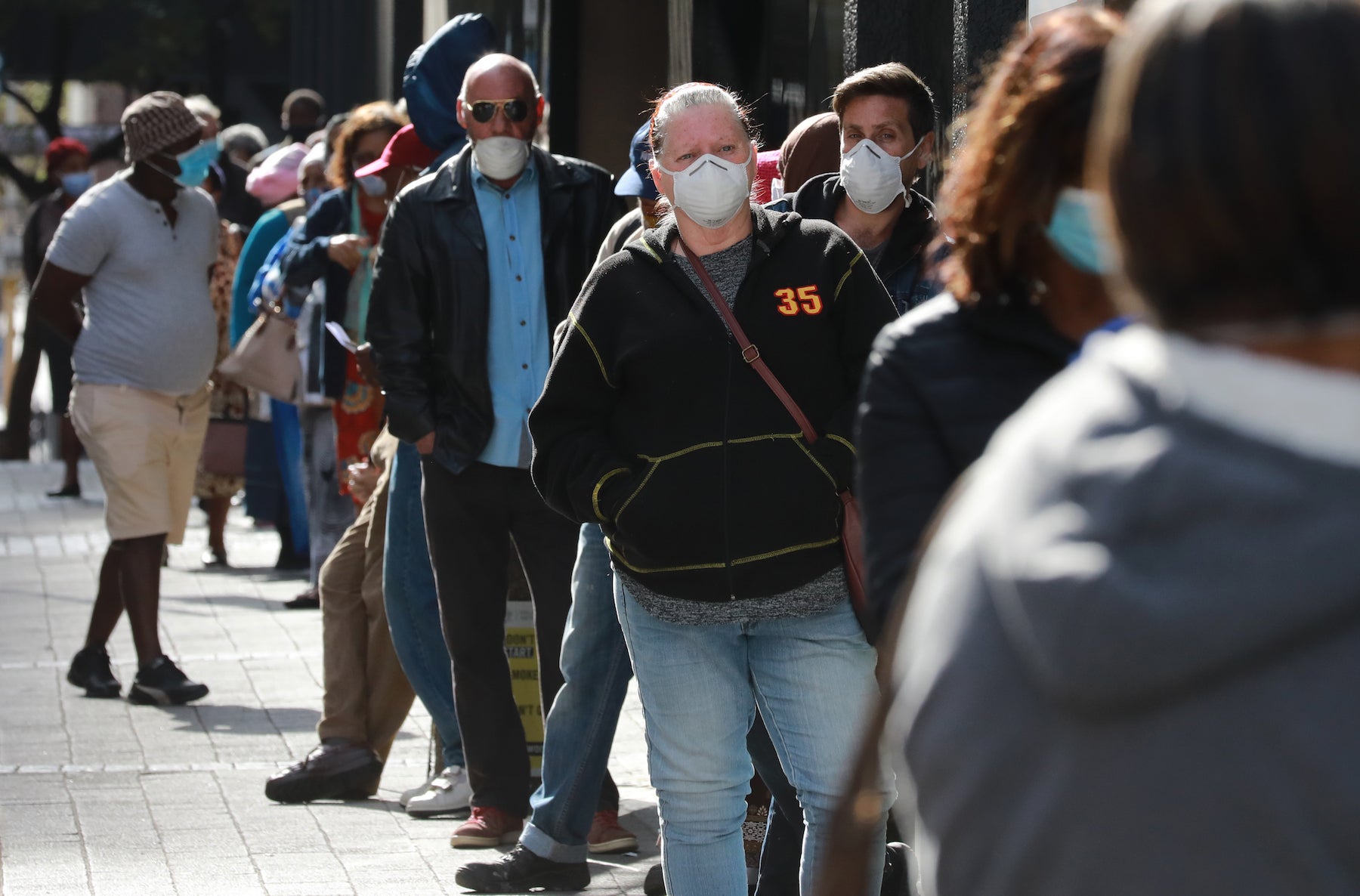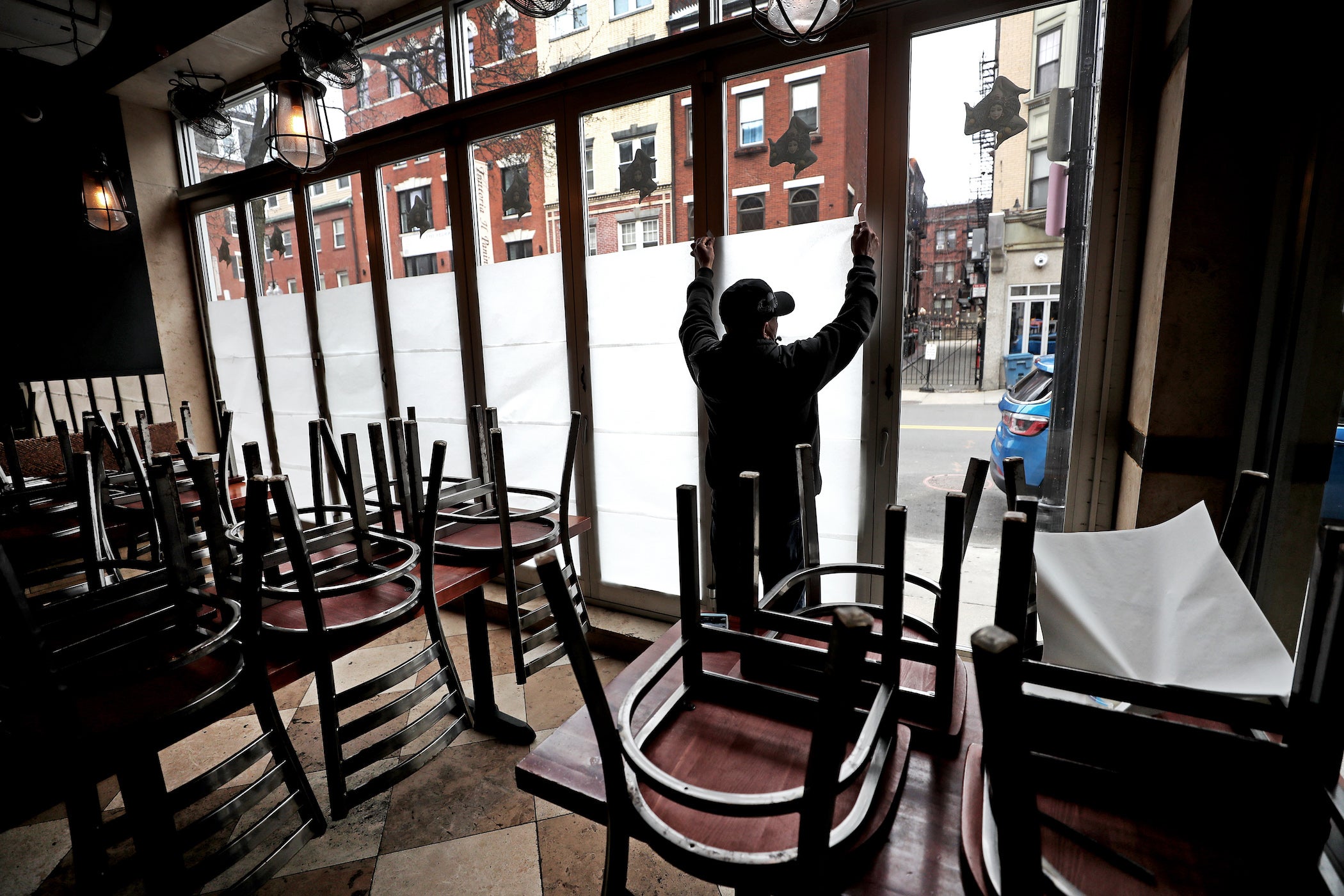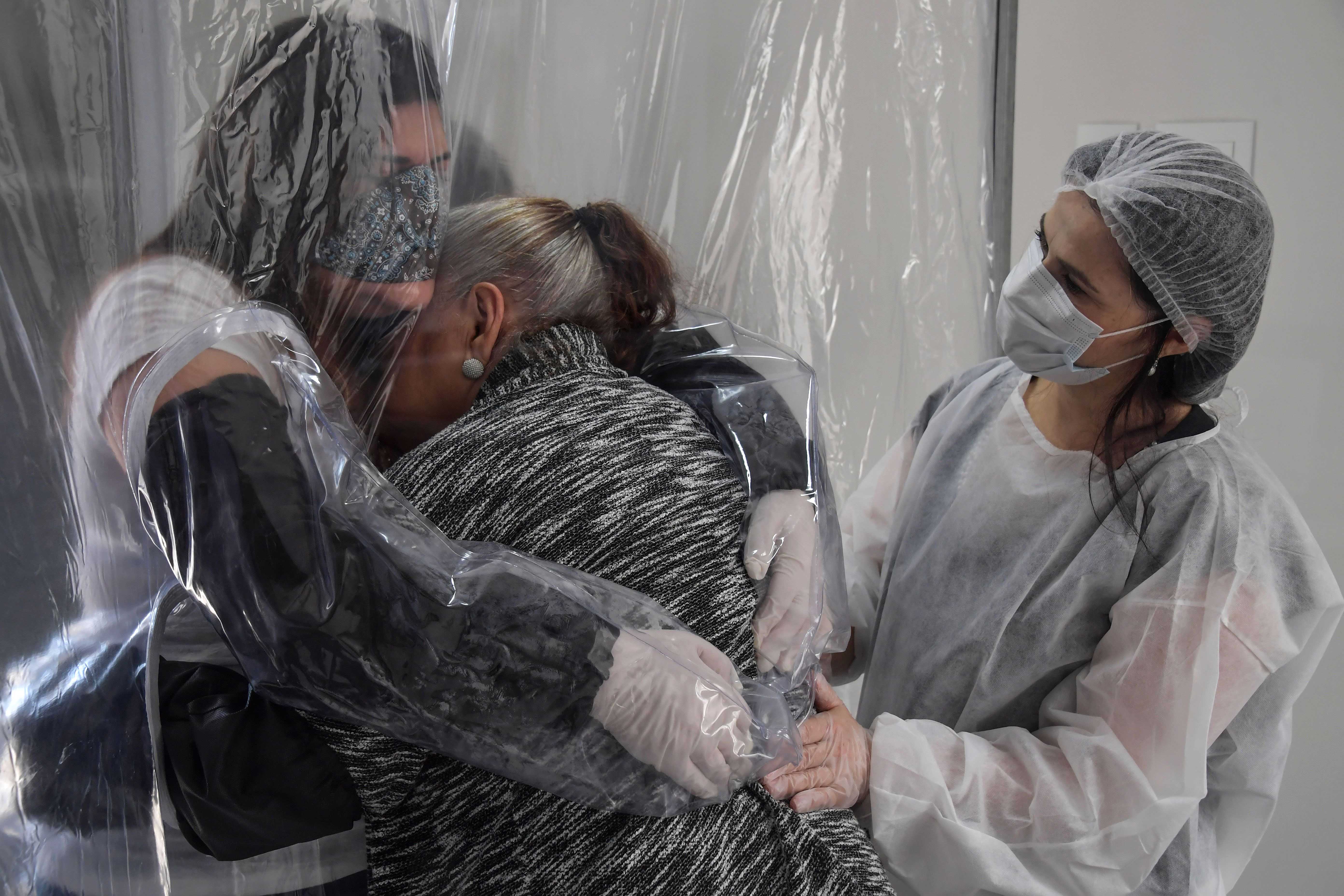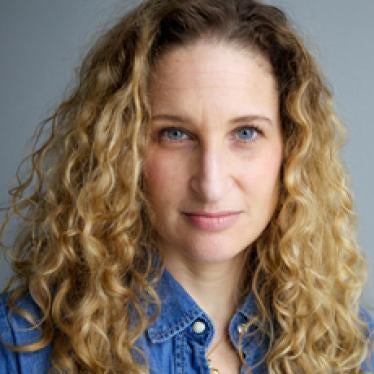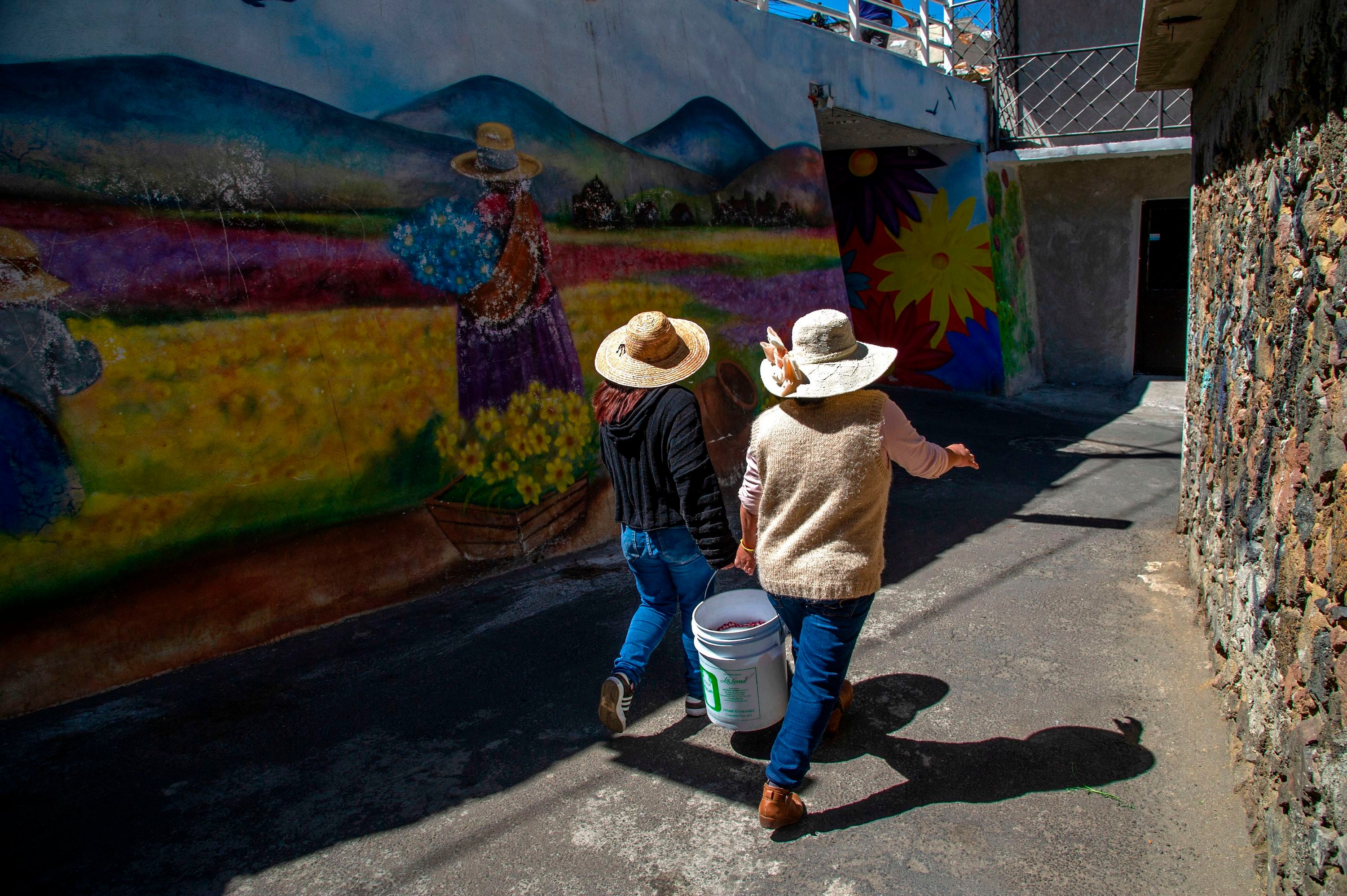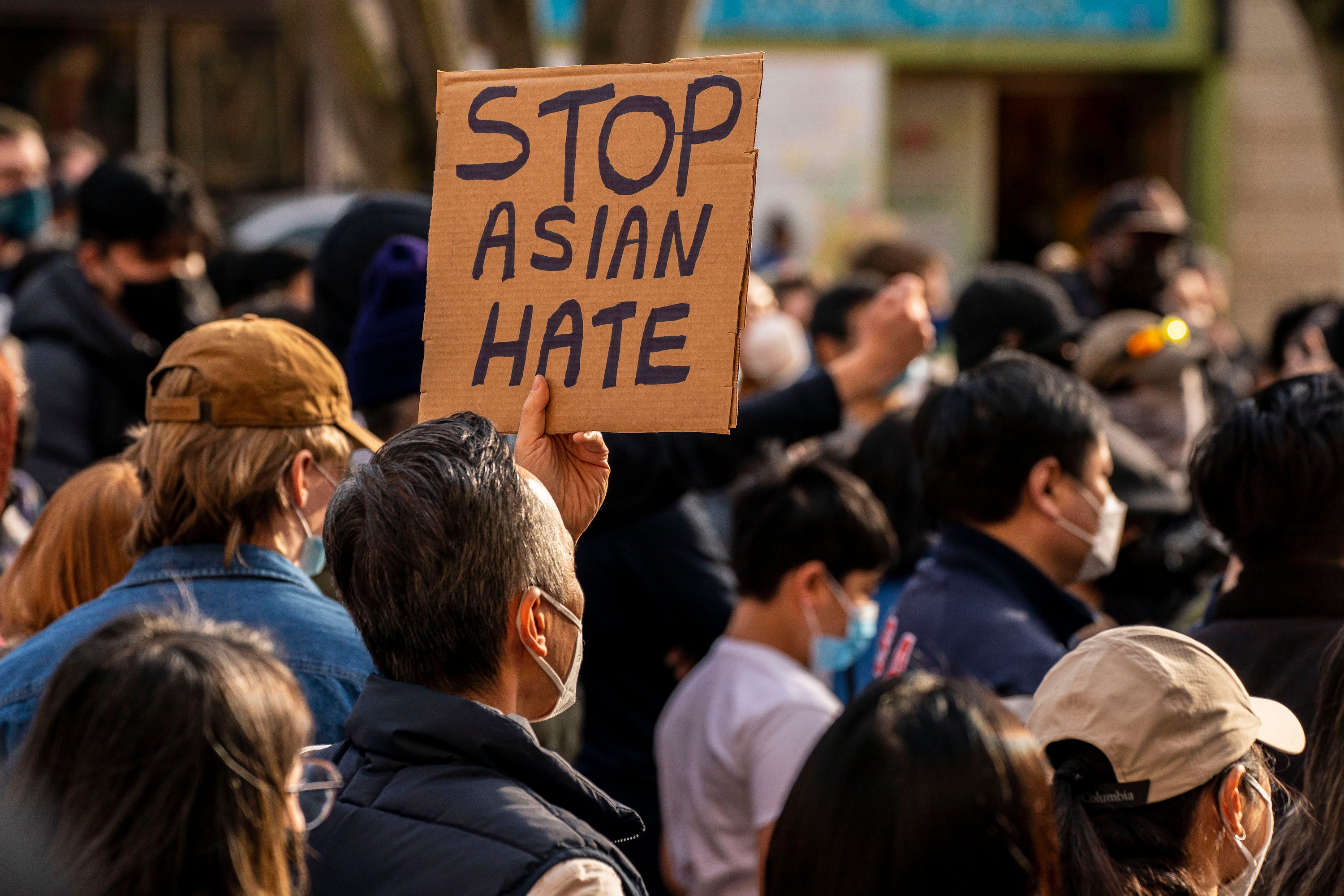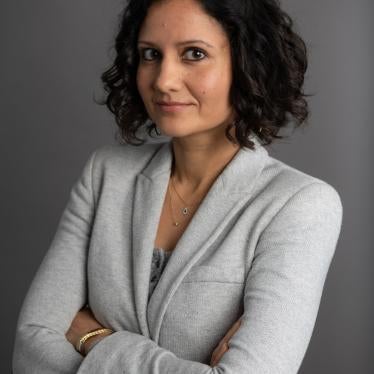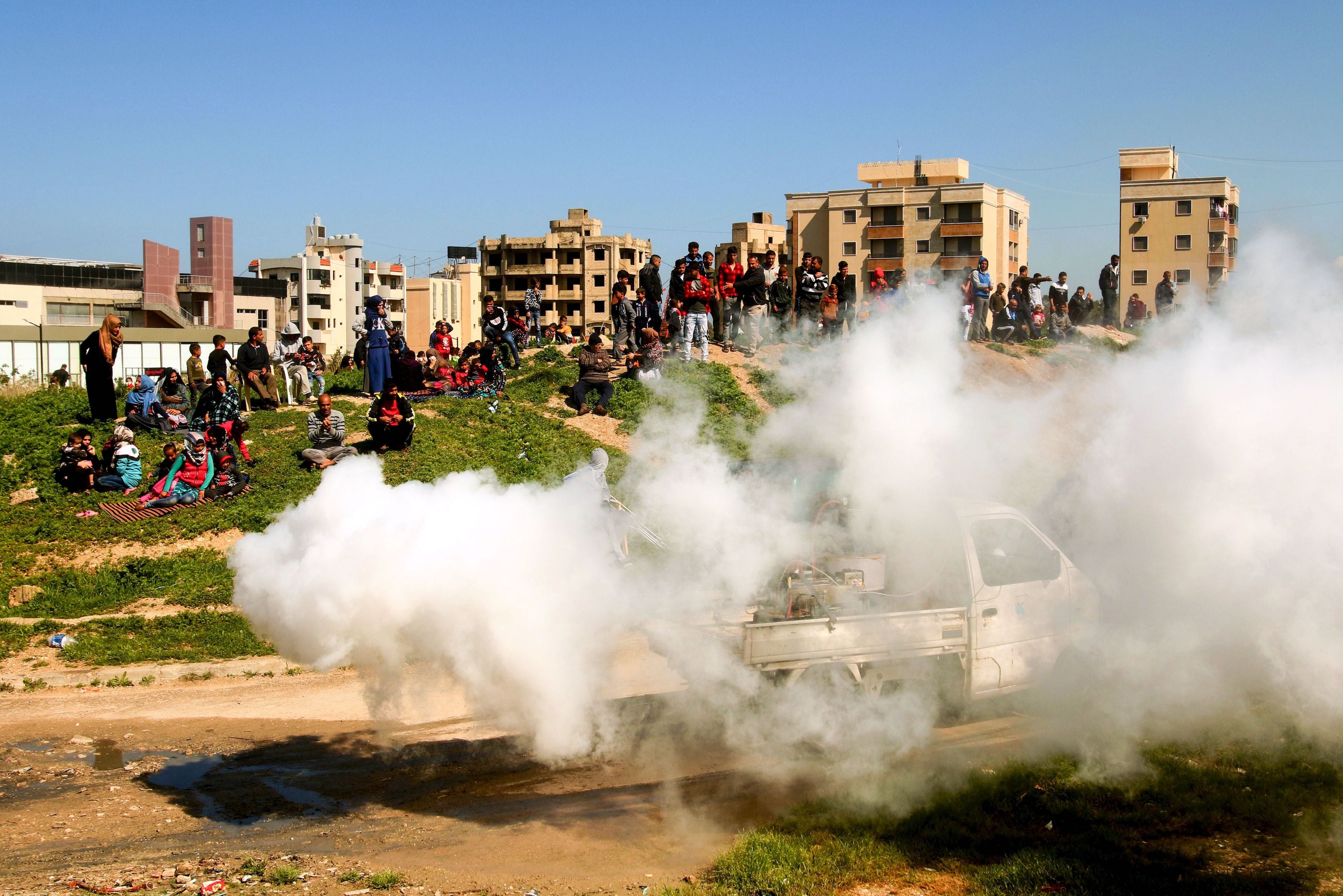The Covid-19 Pandemic: Three Years In
This month marks three years since the World Health Organization (WHO) declared Covid-19 a pandemic. Since then, more than 750 million cases of Covid-19 have been reported, along with more than 6.8 million deaths. This unprecedented public health crisis has exposed systemic failures in the global health architecture, and government responses and actions have exacerbated social inequities and violated a slew of human rights. Human Rights Watch’s Danielle Mulima, health and advocacy coordinator, gathered a group of Human Rights Watch researchers to discuss the variety of human rights violations related to the pandemic, and what governments and non-state actors, like pharmaceutical companies, should do before the next pandemic strikes.
How have national governments and international institutions’ responses to the pandemic been?
The pandemic has been a disaster for human rights, but I think the hardest part of it is watching institutions fade away and kind of give up.
It’s a huge challenge to be entering the third year of an era-defining pandemic and have so many health authorities simply shrugging at it: the US Center for Disease Control has basically given up on any sense of equitable protections.
But the pandemic is also fundamentally changing how the world works, even if authorities want to ignore it. How can it not? For example, we have the wealthiest country in the history of humanity – the United States – delivering such a negligent Covid response, that there has been over a million deaths despite nearly unparalleled resources at the government’s fingertips. That kind of thing really inverts the “developed/developing world” way of thinking and makes us consider the details of how governance is carried out.
We also have to look at the first three years of the Covid-19 pandemic and realize that its most important global policy debate – the debate over intellectual property as it related to vaccines, testing, and treatment – took place inside a commerce body, the World Trade Organization (WTO), with no health or human rights mandate.
These are just two examples that raise significant questions about whether the current dominance of market-driven and capitalist systems are fit for purpose when it comes to upholding the right to health. Can we really look at the current patent system for medicines, which primarily protects private sector interests, and then look at a map of the dismal vaccine coverage in poor countries, and think that things are working?
The bottom line is that the pandemic isn’t over, and authorities saying it’s over doesn’t make it so. The burden of infections, illnesses, and deaths are shifting onto predictable lines of marginalized and vulnerable communities. This isn’t surprising, but it’s entirely preventable: it’s indeed part of governments’ human rights obligations to work against it. One major question is whether the WHO will continue the pandemic phase or declare the emergency over, and what that will mean for the future of Covid, global health, trust in institutions, and protection of fundamental rights.
In an effort to slow the spread of Covid-19, governments around the world closed schools and moved to online learning. How has the use of online learning products impacted children’s privacy, then and now?
In the rush to connect children to online classrooms during the pandemic, many governments recommended online learning products that were unsafe for children to use. The overwhelming majority of the apps and websites we reviewed could or did surveil children, using intrusive techniques to track them across the internet, outside school hours, and deep into their private lives: most often for commercial, advertising purposes.
Online learning is here to stay, even as many students return to physical classrooms. And yet, most schools are still using these government-recommended online learning products that infringe on children’s privacy.
Whether a child is in school in person or online, they are entitled to special protections that guard all of their rights, including their privacy. Because information collected about what a child does in their online classrooms can be just as sensitive and revealing as physical school records, it’s important to protect both to create safe spaces for children to grow, play, and learn.
Throughout the pandemic many countries have struggled to get access to vaccines, despite wealthier countries and pharmaceutical companies being in a position to facilitate access. What should be done differently moving forward?
Even before any Covid-19 vaccines were approved by the WHO, a handful of rich countries had negotiated opaque deals with vaccine makers, and bought up the vast majority of vaccines that were being developed. This “vaccine nationalism” undermined calls for global solidarity and cooperation toward universal and equitable vaccine access and a global recovery.
Many of those same rich governments blocked a proposal by India and South Africa at the WTO to waive intellectual property rules for Covid-19 health products, including tests, treatments and vaccines. A comprehensive waiver could have helped to expand and diversify manufacturing of lifesaving medicines and other health products needed for the Covid-19 response. Instead, after 20 months of stalled negotiations, the governments at the WTO failed to deliver a comprehensive waiver, choosing instead to protect pharmaceutical companies' monopolies at the expense of global access to Covid-19 vaccines, tests, and treatments.
The end result: pharmaceutical companies developed lifesaving Covid-19 vaccines and other health products with massive amounts of public money, but they refused to share their knowledge and technology with the world, putting profits over human lives.
Going forward, governments should ensure that public money is used for global public good and not corporate profits, especially during a worldwide health crisis. Governments should require pharmaceutical companies to share knowledge and transfer technology to ensure that lifesaving vaccines and other health products are available and accessible for all, no matter where you live or how rich you are.
How have economic inequalities been exasperated by the pandemic?
The health and the economic impacts of the pandemic have tracked existing inequalities, hitting low-income people especially hard and making the wealth gap worse. This is true of the immediate impacts of policies to contain the virus, as well as the cascade of economic problems that have followed.
Also, disruptions to global trade caused by the pandemic, combined with other factors, contributed to high inflation that was then made much worse by Russia’s full-scale invasion of Ukraine, a major exporter of both grain and oil and gas. This led to a global spike in food and fuel prices. The World Food Programme (WFP) estimates that 345 million people will experience food insecurity this year, which is more than double prepandemic levels.
Meanwhile, the richest 1 percent have captured two-thirds of all new wealth since 2020, with 95 food and energy companies making US$306 billion in windfall profits, according to Oxfam.
Governments were already cash-strapped because of the fallout from the pandemic, and the added economic strain has led many governments to cut spending in ways that can make things even harder for people, such as by reducing access to or quality of public services like health and education.
Many people lost income or even their job during the pandemic, especially in the retail and food industries and in the informal sectors. Many governments responded by passing packages that supported those in need with cash payments, enhanced unemployment benefits, and food assistance. Were these programs successful?
The pandemic exposed the precariousness of people’s ability to realize their human rights. Half the world’s population – 4 billion people – is not covered by any social security or other forms of social protection to support themselves when they do not earn enough to pay for things like food, housing, or health care. Many of those who are eligible don’t receive adequate amounts or anything at all, often due to corruption, mismanagement, or bureaucratic hurdles.
By the same token, some governments’ decision to greatly expand safety nets and other assistance during the pandemic demonstrated their power to help people on the individual level and to make economies more resilient.
For example, in the United States, poverty fell to historic lows despite record unemployment after Congress passed one of the largest expansions of the nation’s system of social protection since the New Deal, a massive package of policies enacted to combat the Great Depression in the 1930s. But after these benefits, such as an additional US$600 in weekly unemployment benefits, were left to expire, eight million people were forced into poverty.
In Jordan, the government expanded the country’s limited cash transfer program during the first two years of the pandemic, reaching the families of tens of thousands of additional informal workers. But the government let these expansions expire in December 2021, even though soaring inflation made it even harder for people to pay for necessities what they need, and poverty rates remained more than 8 percentage points higher than before the pandemic.
Older people and people with disabilities, especially those living in institutions, are at higher risk for serious Covid-19 symptoms or dying from the virus. For example, in the US, approximately 40 percent of state-reported Covid-19 deaths were among people living in institutions. How can the rights of older people and people with disabilities be better protected?
Covid-19 has had a devastating toll on older people’s lives. In the US, for example, 93 percent of all Covid-19 deaths have been among people over 50. Older people’s rights came under the spotlight around the world during the pandemic, with ageist public comments, discriminatory age-based restrictions of movement, and online vaccine registration systems which highlighted barriers older people can face in accessing essential services online. In nursing homes, we saw an increase in the use of chemical restraints – or drugs used to restrain people – as well as visitor bans.
Three years on, this seems to have been forgotten. Older people’s rights are once again invisible. Take for example, the failure in February of both the UN Secretary General and the UN High Commissioner for Human Rights to recognize them when addressing the Human Rights Council on the 75th anniversary of the Universal Declaration of Human Rights. Ageism persists.
These failings are deep-seated, and a fundamental shift is necessary to better protect older people’s rights. Governments, service providers, public figures, all of us, should recognize older people as rights holders and reject ageism for the prejudice it is. A new UN convention on the rights of older people would be an important step in that direction. It’s what older people are calling for and what governments should agree to start drafting when they meet at the UN to discuss older people’s rights in April 2023.
The Covid-19 pandemic has only provided further evidence of the many risks that institutional life poses. Evidence from around the world – not only the United States, but Britain, France, Italy, and Russia, to name a few –showed early on in the pandemic the higher rates of Covid-19 deaths and infections in residential institutions.
This didn’t surprise those of us who have spent decades documenting the various human rights abuses and risks that stem from institutionalization – starting with involuntary placement, overcrowding, neglect, segregation, and abuse.
For example, when I visited an institution in Serbia in 2015 and 2017, I saw up to 17 children and adults with disabilities living together in one room, where they spent most of their days and nights. They often had to share clothes. Some people with disabilities with high support and medical needs were confined to crowded wards that they rarely left, even to get fresh air. These institutions lacked independent monitoring to ensure the children and adults with disabilities living there are protected from abuse and neglect. We published these findings and other serious concerns, including neglect and inappropriate medication, in a 2016 report. Despite publishing regular reports on infections inside institutions throughout 2020, Serbia refused to publish data on how many people with disabilities and older people living in institutions have died.
As to what needs to change to better protect the rights of older people and people with disabilities – pandemic or not – is, first and foremost, moving people out of institutions. Instead, they should be provided with the necessary support and services so they can live and participate in the community. The UN Disability Rights Treaty, ratified by 185 countries around the world, requires governments to break away from institutionalizing people with disabilities, instead providing a system of support for community-based living that respects the autonomy, will, and preferences of the person with disability.
Throughout the pandemic, especially during lockdowns, there was a spike in domestic violence reports. Yet many women and girls faced additional obstacles to accessing services for survivors. What do governments need to do to better?
The attention given to domestic violence during the pandemic was much-needed and long overdue, but unfortunately it feels like things have now gone back to “business as usual”: no accountability for abusers and overstretched services for survivors run mostly by local groups on shoestring budgets.
Some services like shelters or crisis centers have reopened, which gives survivors the opportunity to get in-person support again. But others have maintained changes that can create challenges for survivors. For example, hotlines or online services might not work for women or girls who live with or are controlled by their abusers, and appointment-only services aren’t suitable in emergencies.
What we see time and again, all over the world, is that governments talk about ending violence against women and girls, but don’t do enough to implement and enforce laws protecting them, nor to fund and support overwhelmed and under-resourced service providers.
Problems in how domestic violence is addressed weren’t caused by the pandemic: the pandemic just made them worse. They are a result of longstanding government failures to fund service providers preventing violence against women and girls, protecting survivors, and punishing perpetrators. What is disappointing is that – while some governments now seem to have increased awareness about how emergencies impact gender-based violence – governments didn’t treat the pandemic as a true wake-up call on domestic violence, using the moment to push forward the systemic change that is sorely needed.
In some cases, like the UK, governments have continued to overtly exclude certain women or girls from domestic violence protections even in the wake of the pandemic. In others, like Turkey and Tunisia, poor implementation of laws leaves women and girls at serious risk of violence and even death. Governments need to commit to funding the elimination of violence against women and girls. In particular, they should prioritize funding for specialized services like shelters and mental health, legal, and socioeconomic support, including ones designed for and run by members of marginalized groups. They should also strengthen and enforce legislation to improve police and judicial response – including measures to protect women from violence, like restraining orders – and to make sure perpetrators are punished.
It would be a missed opportunity if governments don’t learn from what the pandemic highlighted and close massive gaps in tackling domestic violence for the long-term.
The pandemic led to a spike in racism and hate crimes towards many Asian communities around the world. Are Asian communities still being targeted? What should governments do?
The pandemic led to an spike in anti-Asian hate crimes around the world, sometime with violent and even deadly outcomes. In some countries it was government officials who helped drive the hate by spreading false information or by making racist comments or statements. There were cases where the hate also spilled over to other minorities.
From 2020 to 2021, as the pandemic spread, there was a 339 percent spike in anti-Asian hate crimes in the United States. In 2022 there was a slight decrease from 2021, but numbers were still heightened compared to before the pandemic. Last year there were many reported racists attacks and incidents, although numbers might not reflect the true scope, as hate crimes are often underreported. In fact, a study by the European Union Agency for Fundamental Rights showed that 9 out of 10 hate crimes go unreported.
Following the increase in anti-Asian hate crimes, one out of three Asian Americans say they have altered their daily routines for fear of being attacked. Some reiterate that anti-Asian racism has existed for a long time, but had not been taken seriously until recently.
Governments should take steps to prevent racist and xenophobic violence and discrimination and be mindful of rhetoric that can lead to increased violence targeting specific communities. Governments should also ensure that data on hate crimes is collected and that reported incidents are investigated. In places with high rates of anti-Asian hate crimes, local and national leaders should consult and develop plans together with the local communities affected, as well as ensure resources and services are accessible.
One way to help combat racism in the long term is by ensuring the various cultures, religions, and stereotypes – as well as historical events relevant to various communities – are discussed as part of the school curriculum.
How did migrants and asylum seekers in countries where governments exclude them from health care fare during the pandemic?
Even before the pandemic started, Syrian refugees in Lebanon faced discriminatory policies and restrictions that made it difficult to access many services, including health care. With the onset of the pandemic, Lebanese municipalities used the Covid-19 pandemic to impose discriminatory curfews and movement restrictions that applied only to Syrian refugees. As a result, many Syrian refugees faced difficulty in accessing health resources and essential supplies.
Even accessing vaccines was difficult at first for refugees, despite the Lebanese government committing to vaccinate everyone in Lebanon. Many refugees lacked information on the vaccine, how to register to get a vaccine, and where to go. Many Syrian refugees feared that if they registered through a government-managed platform to get a vaccine, they could face arrest, detention, or even deportation, especially if they didn’t have legal residency in Lebanon. Many refugees also felt it would be difficult to get to vaccination sites because of the restrictions on movement and transportation costs. The extreme coercive measures that Syrian refugees face in Lebanon, only worsened during the pandemic and Syrian refugees ended up dying from Covid-19 at a rate more than four times the national average.
The Covid-19 pandemic has had far-reaching global impacts. Governments weren’t prepared and many violated human rights in their pandemic response. What is happening at an international level to prepare for future pandemics and global health emergencies?
One of the major things the WHO is doing, is to propose the creation of a Pandemic Treaty. The treaty tries to draw on the lessons – both good and bad – from the ongoing Covid-19 pandemic to create a framework for global collaboration in anticipation of the next pandemic.
Basically, it could outline what we need to put in place now to prevent the disastrous situation that unfolded during the height of the Covid-19 pandemic from happening again, which included vaccine hoarding by wealthy countries and the refusal by pharmaceutical companies to share the vaccine recipe with manufacturers in the Global South.
So, as we anticipate a future pandemic, which is inevitable, can the global community find ways to work together, to share scientific information, and to center human rights, particularly the right to health, in its decision-making processes? This would cover everything from vaccine distribution to access to masks for healthcare workers.
What I’m hoping is that the Pandemic Treaty challenges the logic of profit-maximizing pharma companies as well as the Euro-American dominance of the global health architecture. At the same time, I have to be realistic about what an international treaty can and cannot do. But what we’re committing to as Human Rights Watch, is to work alongside other civil society groups to push governments and the WHO to center the right to health in the Pandemic Treaty, so that we do not repeat the catastrophic failures of the past few years.
